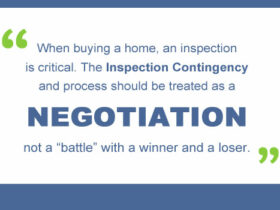 Although it seems similar, buying and selling vacant land is quite different than other real estate transactions. In fact, the differences can feel quite jarring at first, wiping out confidence in navigating that process. Thankfully, all it takes is learning just what to expect to restore confidence and navigate this process with ease. Here’s what everyone needs to know to get started.
Although it seems similar, buying and selling vacant land is quite different than other real estate transactions. In fact, the differences can feel quite jarring at first, wiping out confidence in navigating that process. Thankfully, all it takes is learning just what to expect to restore confidence and navigate this process with ease. Here’s what everyone needs to know to get started.
For informational purposes only. Always consult with a licensed real estate professional before proceeding with any real estate transaction.
Sales Tactics Differ Considerably
The sales tactics used to sell vacant land differs greatly from those used for developed Leander homes. People will not see lots of intriguing pictures of the property, for example, as there is not as much to showcase.
In selling developed properties, pictures of the building’s features and amenities can go a long way in attracting attention, which simply does not work for vacant land. Instead, vacant land ads may have lots of stats and facts listed, allowing buyers to determine if that lot will work for their needs.
Sellers Need to Understand Buyer Preferences
Unlike homebuyers, people in search of vacant land are looking for true potential, not a completed product. They have a vision in mind of their completed project and need to find the foundation that will afford them the opportunity to make it a reality.
Their land needs to be in the perfect location and have all the right characteristics for their project. For this reason, they need tons of stats about the property, allowing them to compare its key characteristics with their vision.
Information they look for in the ad may include:
- Location
- Lot size
- Grade
- Features
- Easements
- Improvements
The ad needs to be easy to read and compare to other listings, helping buyers find the best lot for their needs.
The Land Should Be Prepared for Sale
As with homes and commercial buildings for sale, vacant land needs to be prepped for sale, which allows it to put its best foot forward. Landowners should make it their mission to clear the lot of all trash and loose debris, for starters, then move on to making small improvements to boost its curb appeal. They may want to:
- Cut the grass
- Remove noxious weeds
- Trim bushes and trees
- Cut down compromised vegetation
With the curb appeal handled, landowners can go one step further by having a survey performed to mark the property boundaries. They may also want to mark all setbacks, ensuring buyers can envision their project in that space without any upsetting surprises in the future.
Financing Can Be Difficult to Secure
When buying vacant land, prospective buyers cannot rely on financing to cover their initial expenses. Lenders who provide financing for this purpose are few and far between, often making it necessary to find other funding options.
Before writing off this option, however, buyers should check with their local banks and credit unions to see if they have any funding options available. If they are looking for land in a rural area, they may also qualify for the Family Housing Direct Home Loan program from the USDA or other government programs. For those who already own a residential or commercial property, they could use a home equity loan instead, putting their current real estate to work for them.
Market Based on the Land’s Zoning Designation
In order to build on a vacant parcel of land, the property has to be zoned for the type of structure to be built. Whether building a home or another type of structure, it’s important to make sure the land is properly zoned for the project. Residential zoning allows for homes to be built on it, while commercial zones are designed for retail, offices and other businesses. If the property is in an industrial zone, the land can be used for manufacturing. A rural designation indicates that farming is allowed, while an historical zoning designation means that certain historical structures are protected. Land can also be designated mixed use, giving the property more options when it comes to construction and usage.
Know the zoning of any land and make it clear to potential buyers so there’s no confusion and a lesser risk of the deal following through.
Remember There May Be Incentives
Buyers can potentially offset their costs by taking advantage of any available incentives. After a natural disaster, for example, the government may extend tax breaks to land buyers, decreasing their overall costs in the long run.
By purchasing property in the area devastated by the natural disaster, people assist in rebuilding the region while saving money on their purchase. But buyers must remember to act quickly in completing their building plans, or ordinance changes could disrupt their project.
By taking all these key areas into consideration, people can expertly navigate buying and selling vacant land. If they need any help, real estate agents are available to provide their expertise and guide everyone through the process with confidence.
For informational purposes only. Always consult with a licensed real estate professional before proceeding with any real estate transaction.



